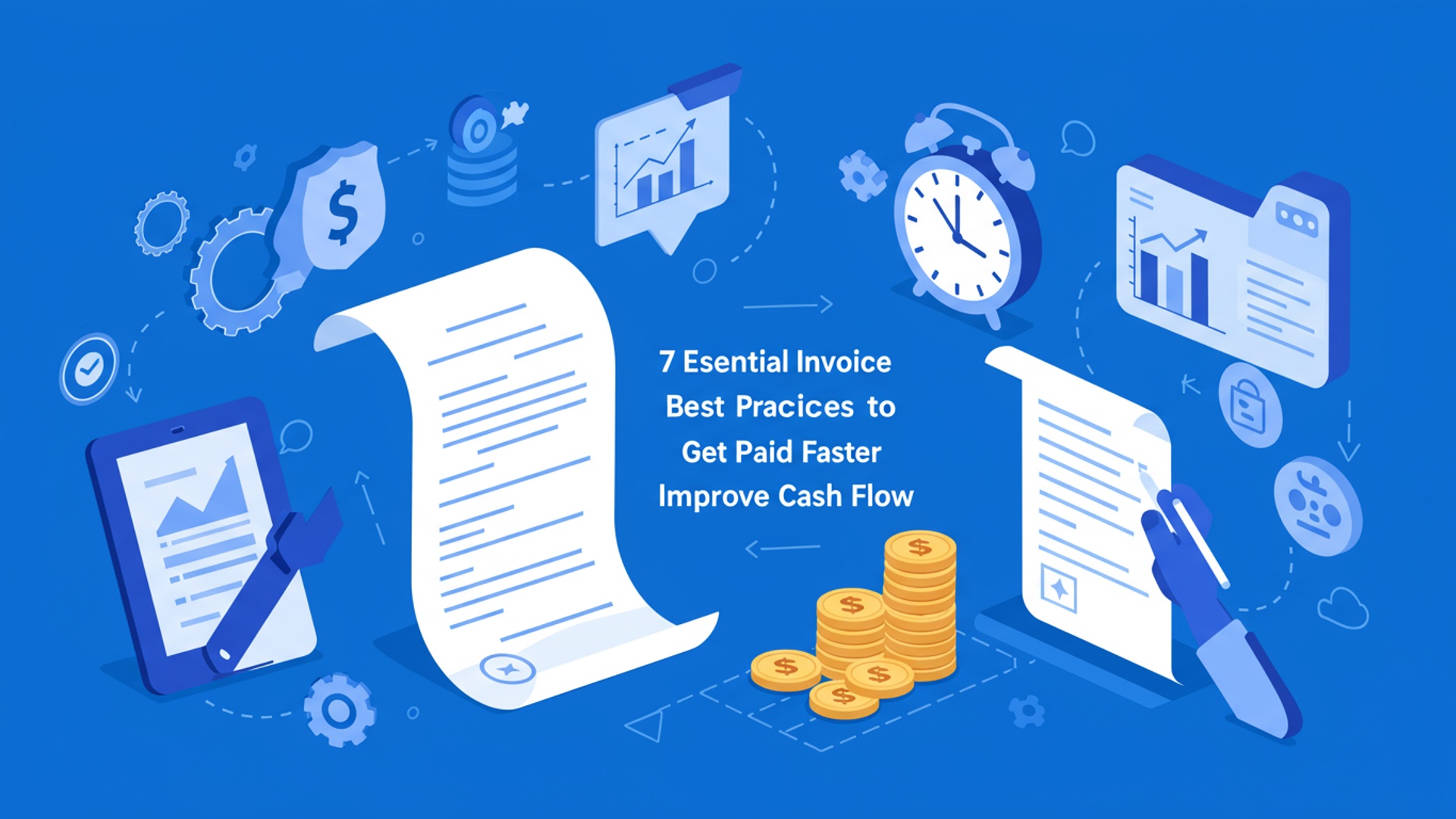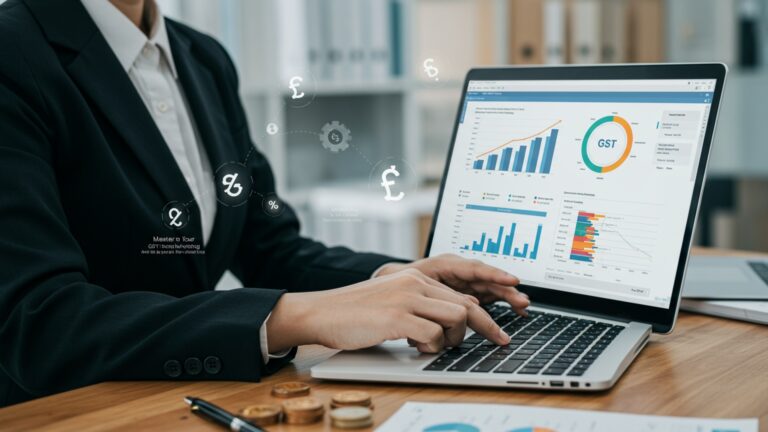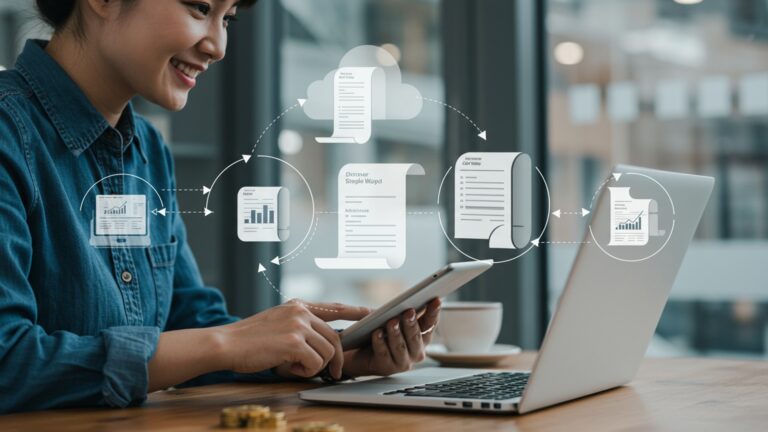7 Essential Invoice Best Practices to Get Paid Faster and Improve Cash Flow
Delayed payments and unpredictable cash flow often stem not from client insolvency. from inefficient invoicing processes, quietly eroding a business’s financial health even with robust sales. In today’s accelerated digital economy, where real-time financial visibility is paramount and e-invoicing mandates are becoming more common, antiquated billing methods are no longer merely inconvenient; they are a significant operational liability. Mastering invoice best practices transcends simple clerical tasks, evolving into a strategic imperative for financial stability. By optimizing clarity, accuracy. timely delivery, businesses can transform their billing cycle from a potential bottleneck into a powerful accelerator, significantly reducing Days Sales Outstanding (DSO) and unlocking capital for growth.

1. Clarity and Detail are King: Craft Impeccable Invoices
One of the foundational invoice best practices for getting paid faster is ensuring your invoices are meticulously clear, comprehensive. error-free. An ambiguous invoice is an invitation for delays, queries. ultimately, late payments. Think of your invoice as a mini-contract; it needs to leave no room for misunderstanding.
- Your Business insights
- Client data
- Unique Invoice Number
Full legal name, address, contact details (phone, email, website).
Accurate legal name, address. relevant contact person.
Essential for tracking. A simple chronological system (
INV-001, INV-002
) or date-based (
20231026-001
) works well.
The day the invoice was created.
- Due Date
- Detailed Itemization
When payment is expected (more on this in point 3).
List every service or product provided with a clear description, quantity, unit price. total for each item. Generic descriptions like “Consulting” can lead to questions; “Market Analysis Report – Q3 2023” is far better.
- Subtotal, Taxes, Discounts. Total Amount Due
- Payment Instructions
Break down all financial components clearly. Specify the tax rate and the amount applied.
How the client can pay you (bank transfer details, online payment links, etc.).
Imagine a freelance graphic designer who sends an invoice with just “Design Services – $500.” The client might question what specific designs are covered, leading to emails back and forth and delaying payment. In contrast, an invoice detailing “Logo Redesign (Concept A, Revisions 1-3) – $300” and “Website Banner Ad Package (3 Banners) – $200” provides immediate clarity, drastically reducing the chance of payment delays stemming from confusion.
2. Timely Issuance: Send Invoices Promptly
Delaying the dispatch of your invoice is akin to delaying your own payday. It’s one of the most straightforward invoice best practices, yet often overlooked. The moment a project is completed, or a service milestone is reached, your invoice should be ready to go out.
- Fresh in Mind
- Prevents Budgetary Issues
- Sets a Professional Tone
When the work is fresh in the client’s mind, they are more likely to process the invoice quickly. If weeks pass, the project might be a distant memory, requiring them to revisit records, which takes time.
Some clients operate on strict monthly or quarterly budget cycles. Sending an invoice too late might mean it misses their current cycle, pushing your payment into the next one.
Prompt invoicing signals professionalism and that you value your time and services, encouraging clients to do the same.
Develop a routine. Whether it’s the end of each work week, the 1st and 15th of the month, or immediately upon project completion, stick to a consistent schedule for generating and sending invoices. For ongoing services, consider mid-month or end-of-month billing.
A small marketing agency used to send out all invoices on the last day of the month. After implementing a policy to invoice within 24 hours of project completion, they observed a 15% reduction in their average payment collection time within three months. This direct correlation between invoice timing and payment speed is a powerful demonstration of this best practice.
3. Clearly Define Payment Terms and Conditions
Ambiguous payment terms are a major culprit behind late payments. Effective invoice best practices demand crystal-clear communication regarding when and how you expect to be paid. This includes defining the payment due date, accepted payment methods. any penalties for late payment.
- Payment Due Date
- Accepted Payment Methods
- Late Payment Penalties
- Early Payment Discounts
This is non-negotiable. Common terms include “Net 30” (payment due 30 days from the invoice date), “Net 15,” or “Due on Receipt.” “Due on Receipt” implies immediate payment, though practical processing times vary.
Clearly state how clients can pay. Examples include bank transfers (provide bank name, account number, SWIFT/IBAN), credit card payments (via online portal), or digital wallets.
Outline any fees or interest charged for overdue invoices. This acts as a deterrent and compensates you for the inconvenience. For instance, “A late fee of 1. 5% per month will be applied to all overdue balances.” Ensure these terms comply with local regulations.
Conversely, you might offer a small discount (e. g. , 2% if paid within 10 days) to incentivize prompt payment. This can significantly improve cash flow for some businesses.
| Term | Description | Impact on Cash Flow |
|---|---|---|
| Net 7 | Payment due 7 days from invoice date. | Fastest, ideal for services/products with quick turnaround. |
| Net 15 | Payment due 15 days from invoice date. | Good balance, common for small businesses. |
| Net 30 | Payment due 30 days from invoice date. | Standard for many industries. can strain cash flow. |
| Net 60 | Payment due 60 days from invoice date. | Often seen with larger corporations, can severely impact cash flow. |
| Due on Receipt | Payment expected immediately upon receiving the invoice. | Potentially fastest. requires immediate client action. |
Always ensure these terms are not only on the invoice but also agreed upon in your initial contract or service agreement. Transparency upfront prevents disputes later.
4. Offer Multiple, Convenient Payment Options
In today’s digital age, limiting your clients to a single payment method is a surefire way to delay payments. Embracing diverse payment channels is a crucial aspect of modern invoice best practices. The easier it is for your client to pay, the faster they will.
- Bank Transfers (ACH/Wire)
- Credit/Debit Card Payments
- Digital Wallets
- Online Payment Portals
A traditional and reliable method, especially for larger sums. Provide clear bank details including account name, number. routing/SWIFT code.
Integrate with online payment gateways (e. g. , Stripe, PayPal, Square) that allow clients to pay directly from the invoice link. This is incredibly convenient for clients and often leads to immediate payment.
Services like Apple Pay, Google Pay, or even specific industry-related digital payment platforms can offer quick, mobile-friendly payment.
Many accounting software solutions offer a dedicated client portal where invoices can be viewed. payments made securely.
A client might prefer to pay by credit card for the rewards points, or their internal accounting system might prioritize bank transfers. By offering choices, you cater to their preferences and remove potential friction points.
If you’re concerned about transaction fees associated with credit card payments, consider absorbing a small percentage or clearly stating a surcharge (if legally permissible in your region). But, weigh this against the benefit of faster payments and improved client satisfaction. Often, the convenience outweighs the minor cost.
5. Automate Your Invoicing Process
Manual invoicing is not only time-consuming but also prone to human error, which can lead to delays. Leveraging technology to automate your invoicing is a powerful contemporary invoice best practice that significantly streamlines operations and boosts cash flow.
- Reduced Errors
- Time Savings
- Timely Delivery
- Automated Reminders
- Improved Tracking
Automated systems minimize typos, incorrect calculations. missing data, ensuring invoices are accurate from the start.
Free up valuable time that would otherwise be spent on manual data entry, formatting. sending.
Schedule invoices to be sent automatically upon project completion or at predetermined intervals (e. g. , monthly for recurring services).
Many systems can send automated payment reminders before and after the due date, reducing the need for manual follow-up.
Easily track invoice status (sent, viewed, paid, overdue) from a centralized dashboard.
- Accounting Software
- Project Management Software Integrations
Tools like QuickBooks, Xero, FreshBooks, or Zoho Books are designed specifically for small to medium-sized businesses to manage invoicing, expenses. financial reporting.
Some project management tools integrate with accounting software, allowing you to generate invoices directly from completed tasks or logged hours.
A consulting firm that billed hourly previously spent hours each month compiling timesheets and manually creating invoices in a spreadsheet program. After adopting an accounting software that integrated with their time-tracking tool, invoices were generated and sent with a few clicks, automatically including detailed work logs. This cut their invoicing time by 80% and reduced payment collection time by an average of 7 days due to the consistency and accuracy of the automated system.
Example of a simple automated billing setup:
1. Project Completion Trigger: Mark project as "Complete" in Project Management tool. 2. API Integration: Project Management tool sends data (client, services, total) to Accounting Software. 3. Invoice Generation: Accounting Software auto-generates invoice, attaches detailed work log. 4. Scheduled Send: Invoice sent to client email automatically based on pre-set terms (e. g. , "Due on Receipt"). 5. Automated Reminders: If unpaid after X days, system sends reminder email.
6. Follow-Up Diligently (but Professionally)
Even with the best invoices and automation, some payments will inevitably be late. A systematic and professional follow-up strategy is a non-negotiable component of effective invoice best practices. This isn’t about being aggressive; it’s about clear communication and managing expectations.
- Pre-due Date Reminder
- Due Date Reminder
- Overdue Reminder (Initial)
- Overdue Reminder (Escalated)
- Final Notice
A friendly email a few days before the due date can be highly effective. “Just a friendly reminder that Invoice #XXXX for [Project Name] will be due on [Date].”
Send an email on the due date. “This is a reminder that Invoice #XXXX is due today. Please let us know if you have any questions.”
Send a polite email 1-3 days after the due date. “Our records indicate that Invoice #XXXX, which was due on [Date], is still awaiting payment. Please let us know the status or if you require any assistance.”
After 7-14 days, a firmer but still professional email. Reattach the invoice and highlight any late payment terms. Consider a phone call if emails are unanswered.
If payment remains outstanding after 30-60 days, send a final notice, outlining potential next steps (e. g. , collection agency, legal action) if payment is not received by a specific date.
- Maintain a Professional Tone
- Provide Easy Payment Access
- Know Your Client
Always be polite and understanding. There might be a legitimate reason for the delay.
Each reminder email should include a direct link to pay the invoice.
Tailor your approach. For a long-standing, reliable client, a softer approach might be better than for a new client.
As financial expert David Allen often emphasizes regarding business processes, “The key to productivity is not doing more things. doing the right things, systematically.” This applies perfectly to invoice follow-up – a systematic approach yields better results than haphazard chasing.
7. review and Adapt: Continuously Improve Your Process
The final, yet often overlooked, of the invoice best practices is to treat your invoicing and payment collection process as an evolving system. What works today might not be optimal tomorrow. Regular analysis and adaptation are key to sustained cash flow improvement.
- Average Days to Pay (DSO – Days Sales Outstanding)
- Aging Report
- Payment Method Popularity
- Client Payment Behavior
Calculate the average number of days it takes for clients to pay your invoices. A lower DSO indicates better cash flow.
This report categorizes outstanding invoices by how long they’ve been overdue (e. g. , 1-30 days, 31-60 days, 61-90 days). It helps identify problematic accounts.
Which payment options are clients actually using? This can inform which methods you should prioritize or promote.
Identify clients who consistently pay late. This might warrant adjusting their payment terms, requiring upfront deposits, or reconsidering future work.
- Adjust Payment Terms
- Refine Follow-up Strategy
- Review Client Contracts
- Invest in Better Tools
If your DSO is consistently high, consider shortening your payment terms (e. g. , from Net 30 to Net 15) for new clients or for specific project types.
Are your reminder emails effective? Experiment with different timings or wording.
Ensure your contracts clearly outline payment terms, late fees. dispute resolution processes.
If your current invoicing solution isn’t meeting your needs, research and upgrade to one that offers better automation, reporting, or payment integrations.
Schedule a monthly or quarterly review of your Accounts Receivable (AR) reports. Look for patterns, identify bottlenecks. brainstorm solutions. This proactive approach ensures your invoicing system remains a well-oiled machine, continually optimized for getting you paid faster and improving your overall cash flow.
Conclusion
Ultimately, mastering invoice best practices isn’t just about getting paid; it’s about safeguarding your business’s financial health and ensuring smooth operations. By consistently implementing clear payment terms, accurate details. timely follow-ups, you transform a transactional process into a strategic advantage. I’ve personally found that proactive communication, like sending a friendly reminder a few days before the due date, drastically reduces late payments. In today’s fast-paced digital economy, leveraging automation for invoice generation and payment tracking, perhaps through an integrated POS system, is no longer optional but essential for improving cash flow. Remember, a healthy cash flow allows you to seize new opportunities, invest in growth. stay resilient. For more insights on optimizing your financial processes, explore Discover 8 Simple Ways to Streamline Your Billing Process and Boost Cash Flow. Take control of your invoicing today. empower your business for sustainable success.
More Articles
How to Streamline Your Billing with Effective POS Billing Software Solutions
Master Billing and POS Software Integration for Enhanced Business Efficiency
Learn How POS Software Can Revolutionize Your Small Business Operations
How to Leverage Cloud Based POS Software for Scalable Business Growth
How to Choose the Best POS Software for Your Retail Store Success
FAQs
Why is sending invoices ASAP such a big deal?
Sending invoices immediately after completing work or delivering goods is crucial. The longer you wait to send an invoice, the longer it takes for you to get paid, directly impacting your cash flow. Prompt invoicing sets the expectation for prompt payment from your clients.
What essential details should always be on my invoices to avoid confusion?
To ensure clarity and avoid delays, every invoice should clearly state: your business name and contact insights, the client’s details, a unique invoice number, the date of issue, a detailed breakdown of services/products provided, the total amount due, the due date. accepted payment methods. Accuracy here is absolutely key!
Is it a good idea to offer incentives for early payment, or should I just focus on charging late fees?
Both strategies can be effective! Early payment discounts can motivate clients to pay ahead of schedule, improving your cash flow instantly. Late fees, on the other hand, serve as a deterrent for overdue payments. Consider using a combination or choose what best fits your client relationships and business model to encourage timely payments.
How do I make sure clients actually pay attention to my payment terms?
Make your payment terms impossible to miss! Clearly state the due date and accepted payment methods on every invoice, perhaps even in bold or a prominent section. It’s also a good practice to discuss them upfront with new clients and ensure your terms are consistent across all your agreements.
Can using technology really help me get paid quicker?
Absolutely! Digital invoicing platforms can automate the sending, tracking. even reminder processes for your invoices. Offering online payment options (like credit cards or direct bank transfers) makes it super convenient for clients to pay instantly, often leading to much faster payment times compared to traditional methods.
What’s the best approach for following up on overdue invoices without making things awkward with my clients?
A polite, structured follow-up is best. Start with a friendly reminder a few days after the due date. If still unpaid, send a slightly more direct email or make a call, always maintaining a professional and helpful tone. The goal is to facilitate payment, not to confront. A clear, consistent process helps avoid awkwardness and keeps relationships positive.
Besides the invoice itself, what’s one big thing I can do to keep my cash flow healthy?
Proactive and clear communication is vital. Before even sending an invoice, ensure there’s a solid understanding with your client about the scope of work, pricing. all payment terms. This upfront clarity can prevent disputes and delays later on, leading to smoother, more predictable payments and ultimately, better cash flow.






